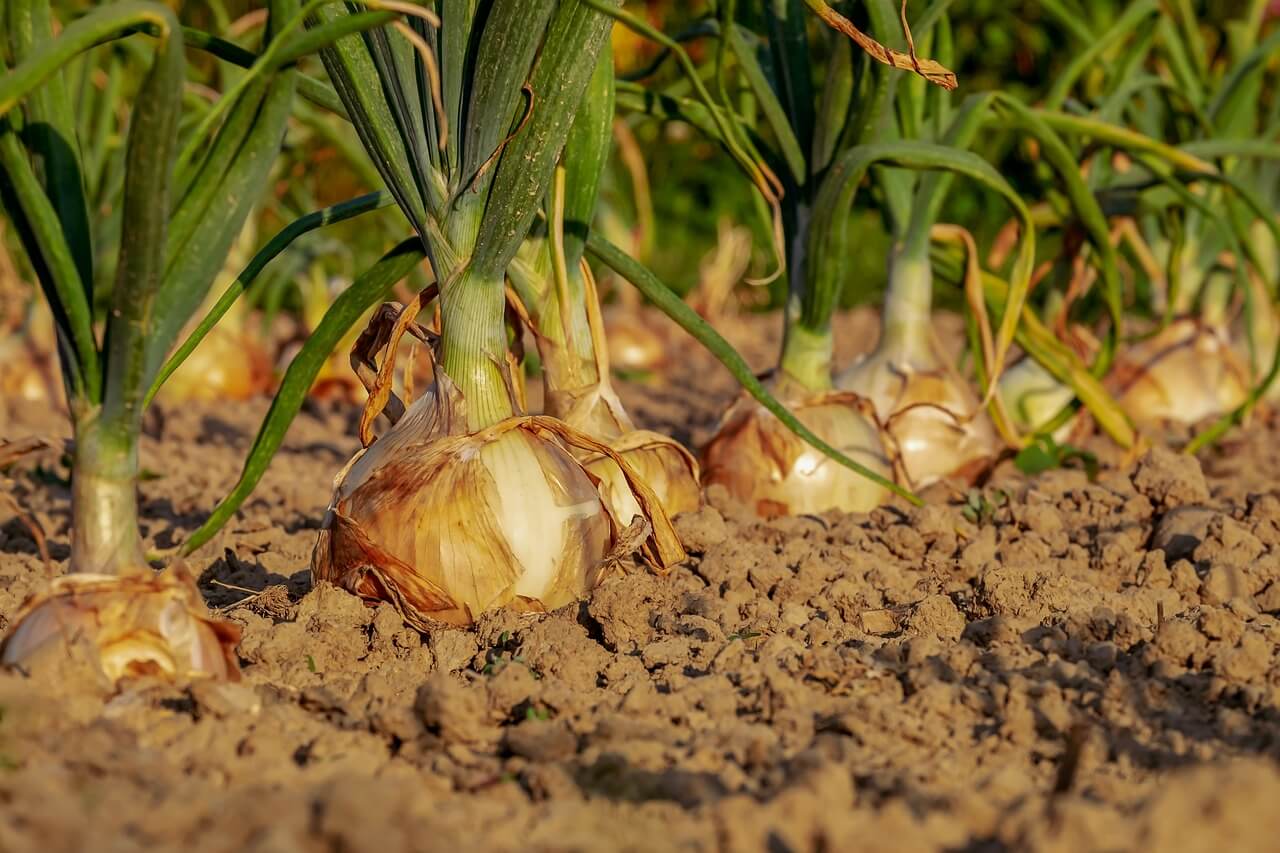When are Onions in Season?
Onions are a seasonal vegetable, and their availability can vary depending on where you live. In general, onions are harvested in the fall and stored for use throughout the winter and spring. However, some varieties of onions can be harvested in the spring and early summer. The availability of onions can also depend on the climate and growing conditions in your area.
Seasonality Overview
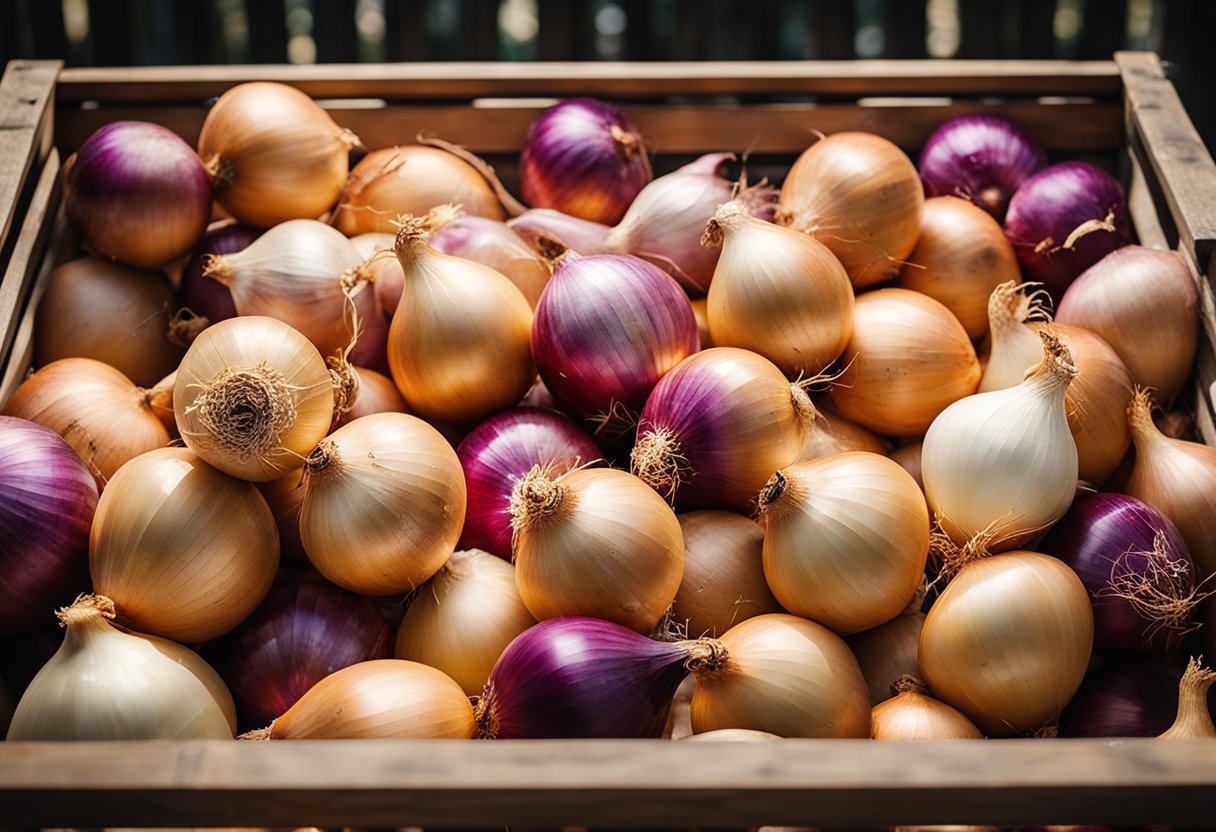
Onions are a staple ingredient in many dishes, and it is important to know when they are in season to ensure you are getting the freshest onions possible. The seasonality of onions can vary based on the region they are grown in and the type of onion.
In general, onions are in season from late spring to early fall. Spring/summer onions are available from March through August and are characterized by their thin, lighter-colored skin. They come in yellow, red, and white varieties and have a milder flavor than fall/winter onions.
Fall/winter onions are available from September through February and are characterized by their hard, uniform, papery skin. These onions have a stronger flavor than spring/summer onions and are the type most people are accustomed to.
It is important to note that the seasonality of onions can vary based on the region they are grown in. For example, onions grown in Nevada and the Pacific Northwest are at their peak in quality during fall and winter after they have had plenty of time to cure.
Varieties and Availability
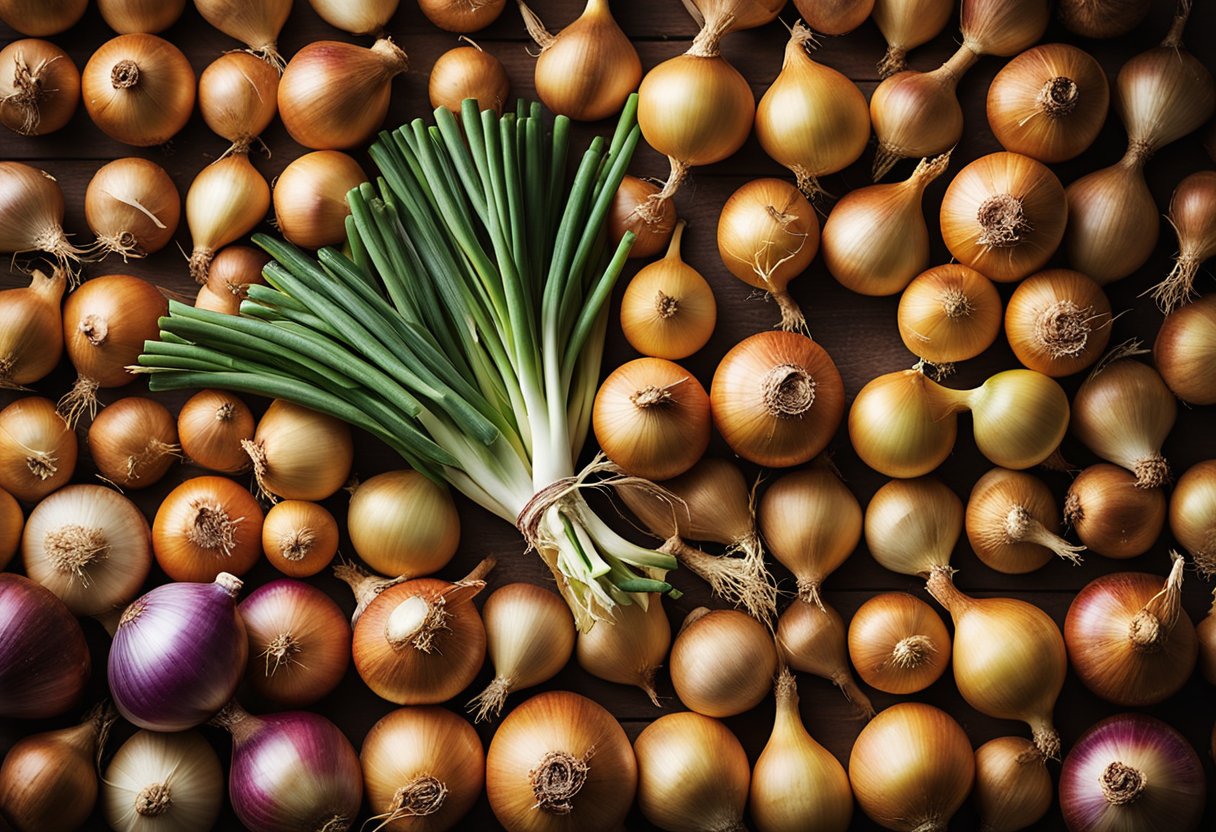
Based on when they are harvested, onions grown in the U.S. can be divided into two categories: spring/summer onions and fall/winter onions. Spring/summer onions are available from March through August and are identified by their thin, lighter-colored skin. They come in yellow, red, and white varieties and are known for their sweet, mild flavor.
Fall/winter onions, on the other hand, are harvested from September through February and have a thicker, darker skin. They tend to have a stronger, more pungent flavor than spring/summer onions.
Yellow, red, and white onions are the most common types of onions available in the U.S., and they come in a range of sizes from less than one inch in diameter to more than 4.5 inches in diameter.
Organic production of onions is also available, but bulb onions for dehydration are excluded from the production count.
Seasonality in North America
In the United States, onions are grown on about 125,000 acres each year, with the majority of production taking place in California, Idaho, Michigan, New York, Oregon, Texas, and Washington.
The harvest season for onions in North America generally begins in late spring and continues through the fall. However, the exact timing of the season varies by state, with some states having longer growing seasons than others.
Onion Seasonality in the US
Here’s a table that shows when onions are in season in each state:
| State | Season |
|---|---|
| California | May – November |
| Idaho | August – October |
| Michigan | July – September |
| New York | August – October |
| Oregon | June – September |
| Texas | March – June |
| Washington | August – October |
Seasonality in South America
South America is a major producer of onions, with countries like Chile, Argentina, and Brazil being major players in the global onion market. The seasonality of onions in South America varies depending on the country and the region within the country.
In Chile, onions are typically harvested from November to March, with the peak season being from December to February. Argentina’s onion season runs from May to September, with the peak season being from June to August. In Brazil, onions are harvested from May to October, with the peak season being from June to August.
Seasonality in Europe
Onions are a staple in many European cuisines, and they are available all year round. However, they have a peak season when they are at their best in terms of flavor and texture. In Europe, onions are in season from August to October, with the peak season being in September.
During this time, you can find fresh and flavorful onions at your local farmers’ market or grocery store. Onions that are in season are usually cheaper and of higher quality than those that are out of season. They are also more sustainable since they are locally grown and do not need to be transported long distances.
If you are looking to cook with onions during their peak season, you can try making classic dishes like French onion soup, onion tart, or onion quiche. You can also use onions as a base for many other recipes, such as stews, soups, and sauces.
In addition to onions, there are many other fruits and vegetables that are in season in Europe at different times of the year. You can use a seasonal produce calendar to find out what is in season in your area and plan your meals accordingly. Some websites like Euronews and EUFIC offer interactive maps that show the seasonal produce in different regions of Europe.
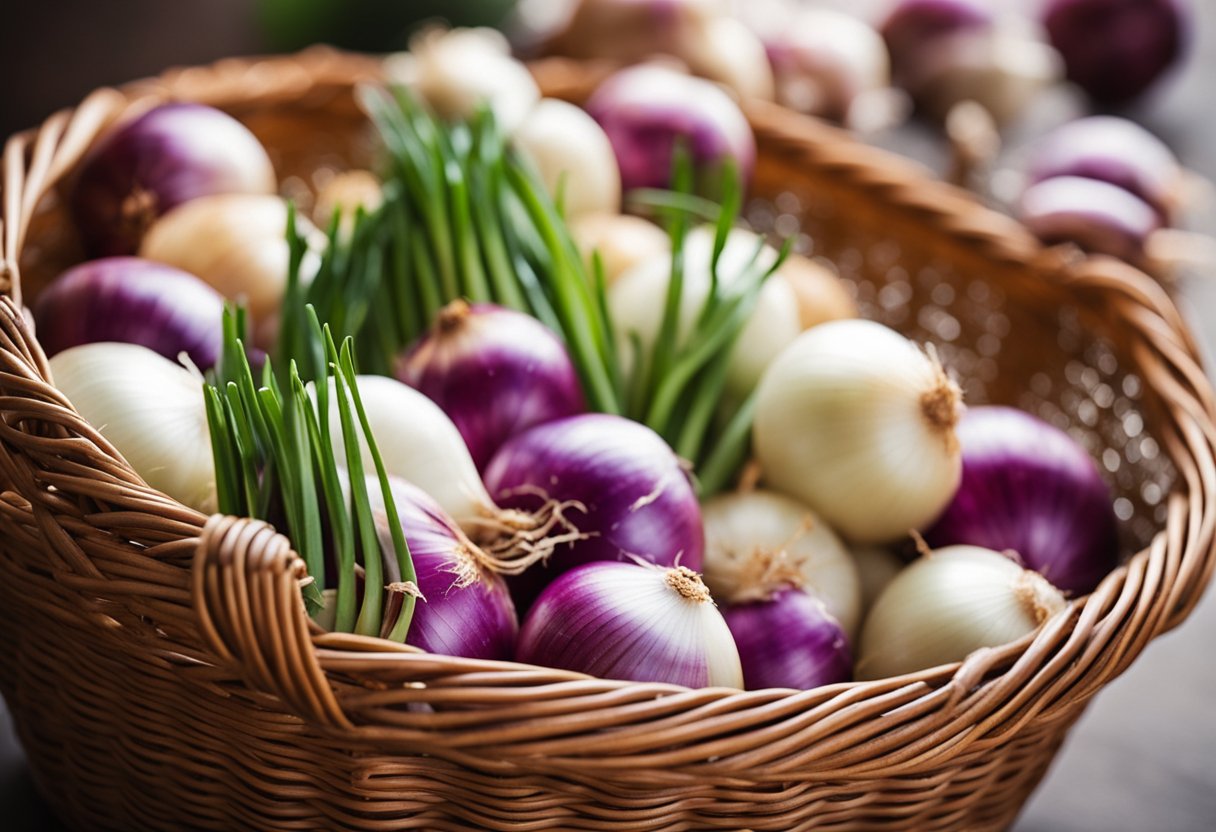
Seasonality in Asia
Asia is a vast continent with diverse climates, so onion seasonality can vary depending on the region. In general, onions are available year-round in most Asian countries, but there are still some variations in terms of peak seasons and production volumes.
In China, onions are grown in many regions, and the harvest season starts from May to June, depending on the location. The most famous onion variety in China is the “Purple Onion of Suizhong,” which is harvested in July and August. This variety is known for its sweet and juicy flavor, and it is often used in stir-fries, soups, and stews.
In Japan, onions are mainly grown in Hokkaido, the northernmost island, where the climate is cooler. The onion season in Hokkaido starts from June and lasts until September. The most popular onion variety in Japan is the “Maiko Onion,” which is harvested in July and August. This onion has a delicate and sweet flavor, and it is often used in salads and pickles.
In India, onions are grown in many states, and the harvest season starts from October and lasts until May. The most popular onion varieties in India are the “Red Onion of Nasik” and the “White Onion of Maharashtra.” These onions are known for their pungent and spicy flavor, and they are often used in curries, chutneys, and pickles.
In Thailand, onions are grown in the northern and northeastern regions, where the climate is cooler. The onion season in Thailand starts from November and lasts until March. The most popular onion variety in Thailand is the “Red Onion of Chiang Mai,” which is known for its mild and sweet flavor. This onion is often used in salads, soups, and stir-fries.
Seasonality in Australia
According to SBS Food, onions come into season in autumn and winter. However, the large variety within the family and the diverse climates in Australia means they’re always available. They do change though; onions in spring are sweeter, early autumn onions are wetter, cool climate onions are more pungent, and ones grown in the warmth tend to be more mild.
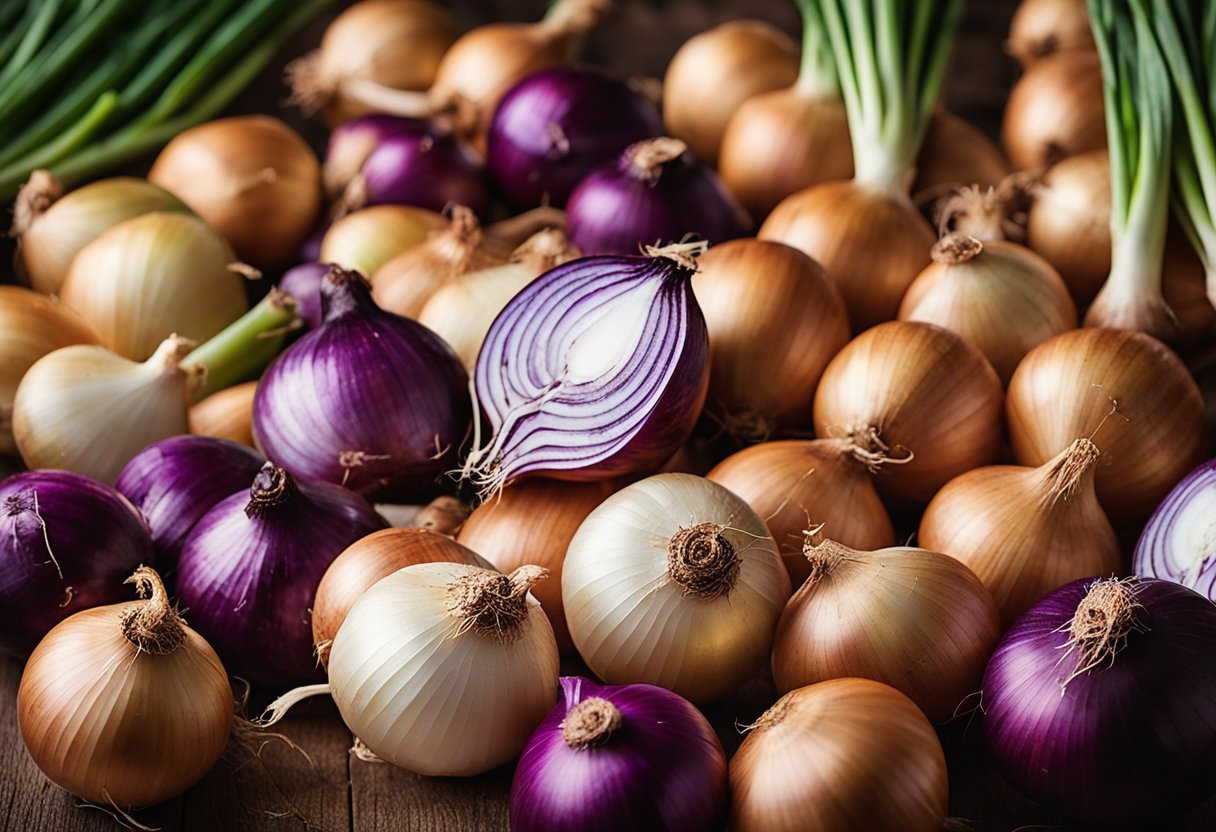
Health Benefits
Onions are not only a tasty addition to many dishes, but they also offer a range of health benefits. Here are some of the most notable:
- Anticancer compounds: Onions contain several compounds that have been shown to have anticancer effects, including quercetin, sulfur compounds, and anthocyanins. These compounds may help prevent the development and spread of cancer cells in the body.
- Blood sugar: Onions may help regulate blood sugar levels, making them a good choice for people with diabetes. This is thanks to their high content of flavonoids, which have been shown to improve insulin sensitivity.
- Bone density: The antioxidants in onions may help reduce bone loss and lower the risk of osteoporosis, which is especially important for women as they age.
- Antibacterial properties: Onions have natural antibacterial properties that can help fight off harmful bacteria in the body, including those that cause infections.
- Digestive health: Onions are a good source of fiber, which is important for maintaining healthy digestion. They also contain prebiotics, which can help promote the growth of beneficial bacteria in the gut.
Overall, adding onions to your diet can provide a range of health benefits, from reducing the risk of cancer and diabetes to improving digestive health and bone density. So next time you’re cooking, don’t forget to add some onions to your dish!
